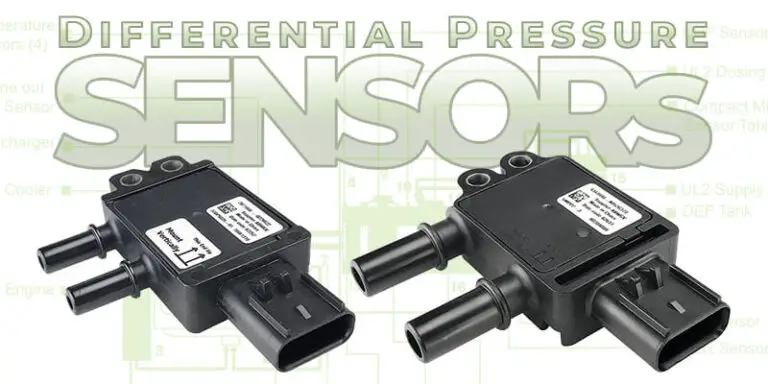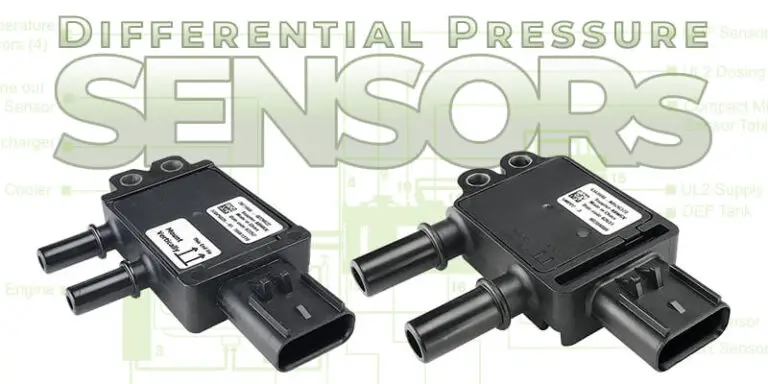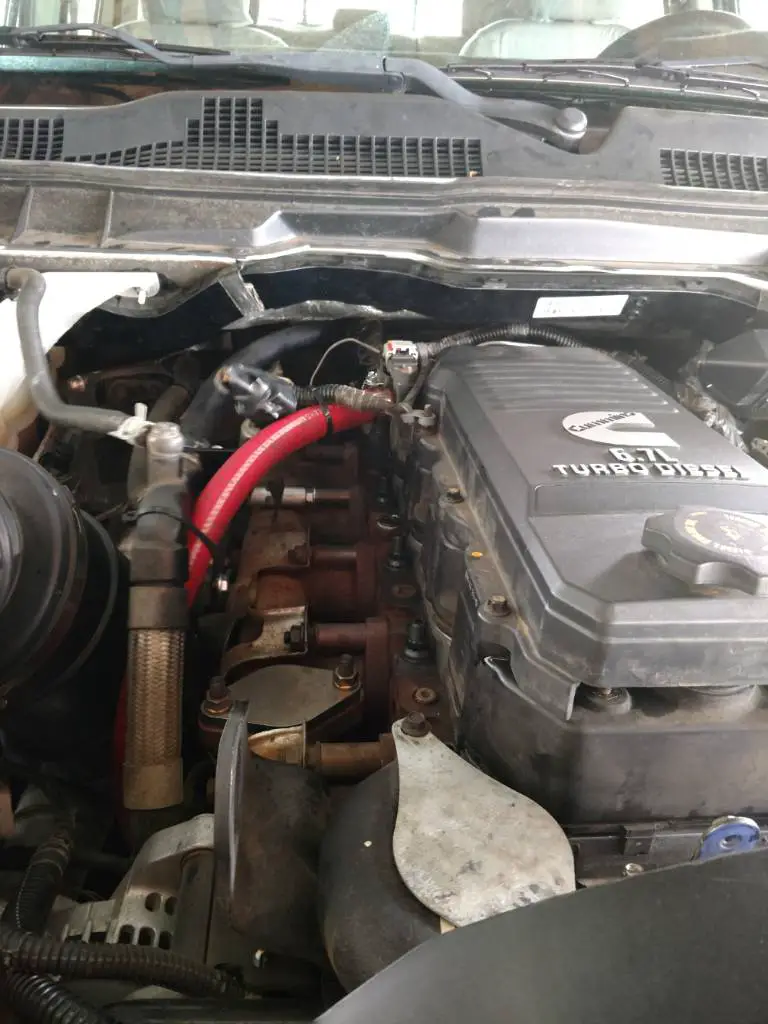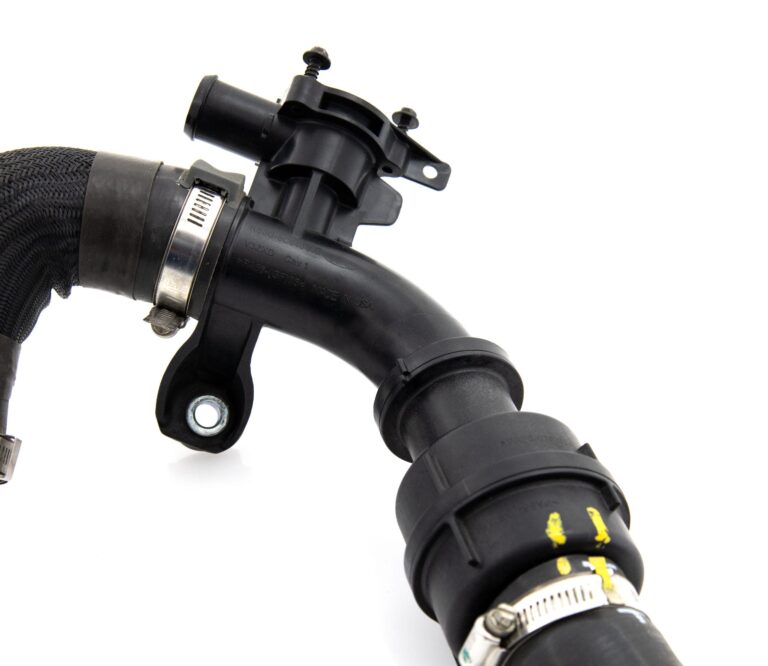Cummins N14 Oil Temperature Sensor Location
The Cummins N14 Oil Temperature Sensor is located behind this pump. The sensor is strategically placed to provide accurate readings of the engine’s oil temperature. It’s vital for maintaining the engine’s health and performance.
Locating the Oil Temperature Sensor
Step-by-Step Guide to Finding the Sensor
Locating the oil temperature sensor on a Cummins N14 engine involves a few clear steps. Firstly, you’ll need to identify the lift fuel pump, which is typically on the side of the engine. The sensor is located behind this pump and is not directly visible from the side. Here’s how you can find it:
- Prepare the Engine: Ensure the engine is turned off and cool before you begin.
- Locate the Lift Fuel Pump: Find the lift fuel pump on the engine’s side.
- Identify the Turbo Oil Tube/Oil Filter: Look for the turbo oil tube or oil filter, which are usually near the sensor.
- Look for Visual Identifiers: Search for the green and black wires; these are connected to the sensor.
- Use a Flashlight: Shine a flashlight from underneath the engine to spot the sensor screwed horizontally into the oil manifold.
Visual Identifiers and Positioning
The sensor is typically marked by its metallic appearance and the distinct green and black wires leading to it. It’s positioned near the turbo oil tube/oil filter and screws into the oil manifold horizontally. This placement allows it to directly contact the oil, providing accurate temperature readings.
Alternate Locations and Variations
Understanding Location Variations
While the most common location for the oil temperature sensor is as described above, there are variations based on engine models and manufacturing years. In some Cummins N14 engines, you might find the sensor located at the side of the oil filter stand, towards the front of the engine. This position also allows the sensor to effectively monitor oil temperature but makes it more visible and potentially easier to access.
Verifying Your Engine’s Configuration
To confirm the sensor’s location in your specific Cummins N14 engine, you can:
- Consult the Manual: Check your engine’s manual for specific diagrams and instructions.
- Visit a Professional: If you’re unsure, consult a certified Cummins technician who can provide accurate information and assistance.
- Check Online Forums: Many truck owners and mechanics discuss these details in online forums, offering insights into various engine configurations.
By understanding the role, location, and variations of the Cummins N14 oil temperature sensor, you’re better equipped to monitor your engine’s health and perform necessary maintenance or troubleshooting.
The Role of the Oil Temperature Sensor
Understanding the Oil Temperature Sensor’s Function
The oil temperature sensor is an integral part of a Cummins N14 engine’s monitoring system. Its primary role is to measure the temperature of the engine oil, which is crucial for maintaining optimal engine performance and longevity. The sensor operates on the principle that the electrical resistance of certain materials changes with temperature. As the oil temperature varies, the sensor’s resistance alters, sending varying voltage signals to the engine’s Electronic Control Unit (ECU). This data is then used to gauge the engine’s operating conditions and ensure it runs within safe temperature parameters.
Impact on the Engine’s Electronic Control Unit (ECU)
The information provided by the oil temperature sensor is vital for the ECU, which acts as the engine’s brain. The ECU uses this data to make informed decisions about engine management. For instance, if the oil temperature is too high, the ECU might adjust fuel injection rates, modify ignition timing, or take other corrective actions to prevent overheating. In severe cases, it may initiate a derate condition to reduce engine power and protect the engine from damage. This highlights how the sensor’s data directly influences engine performance and protection strategies.
Reading and Interpreting Sensor Data
How the Sensor Measures Temperature
The oil temperature sensor in a Cummins N14 engine utilizes a thermistor, a type of resistor whose resistance changes significantly with temperature. As the engine oil heats up or cools down, the resistance of the thermistor changes. This variation alters the voltage signal sent to the engine’s Electronic Control Unit (ECU). The ECU interprets these voltage changes as specific temperature readings. Understanding these readings is crucial for gauging the engine’s health and ensuring it operates within the optimal temperature range.
Decoding Common Readings for Engine Health
Typically, a healthy Cummins N14 engine should maintain oil temperatures between 200°F and 225°F under normal operating conditions. However, these ranges can vary slightly based on workload and ambient conditions. Here’s what different readings might indicate:
- Below 200°F: Usually seen during the engine’s warm-up phase or under light loads. Consistently low readings might suggest a faulty thermostat or sensor.
- 200°F – 225°F: Ideal operating range, indicating the engine is running efficiently without overheating.
- Above 225°F: Suggests the engine is under excessive stress or experiencing cooling issues. Persistent high readings require immediate attention to prevent damage.
Symptoms of a Faulty Oil Temperature Sensor
Identifying Failing Sensor Signs
A malfunctioning oil temperature sensor can lead to inaccurate readings, impacting the engine’s performance. Key signs include:
- Erratic Temperature Readings: Fluctuations or readings that don’t correlate with engine performance.
- Warning Lights: The check engine light or temperature warning light may activate if the ECU receives odd readings.
- Poor Engine Performance: Overheating or underperforming engine due to incorrect ECU adjustments based on faulty sensor data.
Consequences of Ignoring Faulty Sensor Signs
Neglecting these signs can lead to serious engine issues, including:
- Overheating: Without accurate temperature readings, the engine might overheat, causing severe damage.
- Reduced Efficiency: The ECU might alter fuel injection and timing based on incorrect data, reducing engine efficiency.
- Potential Engine Failure: Continuous operation under incorrect temperature conditions can lead to engine failure.
Diagnosing Oil Temperature Issues in the N14 Engine
Common Oil Temperature Problems
Owners of Cummins N14 engines often report issues like unexpected rises in temperature, especially under heavy loads or during long drives. Such problems can arise from various sources, including a failing oil temperature sensor, blocked coolers, or internal engine issues.
Troubleshooting Steps and Professional Help
To diagnose these issues:
- Check the Sensor: Inspect the sensor and its wiring for any visible damage or disconnections.
- Monitor Temperature Changes: Use a diagnostic scanner to monitor real-time temperature readings under different operating conditions.
- Inspect Related Components: Check the oil cooler, thermostat, and other cooling system components for blockages or malfunctions.
If you’re unable to diagnose the issue or if the problem persists, consult a professional mechanic. They can provide a comprehensive analysis and recommend the best course of action.
Preventive Maintenance and Sensor Care
Maintaining Your Oil Temperature Sensor
Regular maintenance can prevent many common issues with the oil temperature sensor:
- Regular Inspections: Check the sensor and its connections during routine maintenance for any signs of wear or damage.
- Clean Contacts: Ensure the sensor’s contacts are clean and secure to provide accurate readings.
- Replace as Needed: Sensors can wear out over time. Replace them according to your engine’s service schedule or if you notice any of the symptoms of a faulty sensor.
Suggested Maintenance Schedule and Practices
- Every Oil Change: Inspect the sensor and wiring.
- Annually: Test sensor accuracy with diagnostic tools.
- As Symptoms Arise: Don’t wait for regular maintenance if you notice any issues.
Replacing the Oil Temperature Sensor in a Cummins N14 engine
Replacing the oil temperature sensor in a Cummins N14 engine is a task that can significantly impact engine performance and longevity. It’s essential to approach this task with care and precision. Here’s a detailed guide to help you safely and effectively replace a faulty sensor.
Preparation and Safety Precautions
Before you begin, it’s crucial to take the following safety precautions:
- Ensure the Engine is Cool: Never work on a hot engine to avoid burns and other injuries.
- Disconnect the Battery: Prevent electrical shocks and shorts by disconnecting the battery.
- Wear Protective Gear: Use gloves and safety glasses to protect against accidental spills and debris.
Tools Needed for Replacement
Gather the following tools before starting the replacement process:
- Wrench Set: To loosen and tighten fittings.
- New Oil Temperature Sensor: Ensure it’s the correct model for the Cummins N14.
- Cleaning Solvent: To clean the area around the old sensor before installing the new one.
- Rags or Towels: For cleaning and wiping up any spills.
Step-by-Step Replacement Process
- Locate the Sensor: Refer to the “Locating the Oil Temperature Sensor” section to find the sensor’s exact location on your engine.
- Remove Electrical Connector: Carefully disconnect the electrical connector from the old sensor. Note how it’s attached, so you can easily reconnect the new one.
- Unscrew the Old Sensor: Using the appropriate wrench, turn the sensor counterclockwise to unscrew it from its position. If it’s tight or corroded, apply some penetrating oil to ease the removal.
- Clean the Area: Once removed, clean the area around the sensor mount to ensure a clean environment for the new sensor. Use a rag and some cleaning solvent to remove any dirt or residue.
- Install the New Sensor: Screw the new sensor into place by hand to avoid cross-threading. Once it’s in position, tighten it with the wrench, but avoid over-tightening, which could damage the sensor or the engine.
- Reconnect Electrical Connector: Attach the electrical connector to the new sensor. Ensure it’s secure and properly aligned.
- Check for Leaks: After installation, start the engine and let it reach operating temperature. Check around the new sensor for any signs of oil leaks.
- Test the Sensor: Use a diagnostic scanner to ensure the new sensor is providing accurate readings and that there are no error codes related to the oil temperature circuit.
Post-Replacement Tips
- Keep an Eye on Temperatures: Monitor the oil temperature over the next few days to ensure the new sensor is functioning correctly.
- Dispose of the Old Sensor Properly: Consider environmental regulations and dispose of the old sensor at a proper facility.
- Record the Maintenance: Note the date and details of the replacement in your vehicle’s maintenance record.
By following these detailed instructions, you can confidently replace the oil temperature sensor in your Cummins N14 engine. This will ensure accurate monitoring of your engine’s oil temperature, contributing to its overall health and efficiency.
Expert Insights
Gaining insights from seasoned Cummins N14 technicians can be invaluable in understanding and maintaining your engine’s health. Here’s expert advice on handling oil temperature issues and ensuring your engine remains in top condition.
Advice on Handling Oil Temperature Issues
- Regular Monitoring: Experts emphasize the importance of regularly checking your oil temperature readings. Sudden changes or abnormal temperatures can indicate potential issues that need immediate attention.
- Understand Normal Ranges: Familiarize yourself with the normal operating temperature range for your specific N14 engine. Knowing what’s normal helps you quickly identify when something is off.
- Don’t Ignore Warnings: If your engine indicates high oil temperatures or if you notice performance issues, don’t ignore them. Early intervention can prevent more severe problems.
- Use Quality Oil and Filters: High-quality oil and filters can significantly impact your engine’s temperature management. Experts recommend using products that meet or exceed OEM specifications for the best protection.
Recommendations for Keeping Your Engine in Top Condition
- Regular Maintenance: Stick to a strict maintenance schedule. Regular oil changes, filter replacements, and system checks can keep your engine running smoothly and prevent temperature issues.
- Cooling System Upkeep: Ensure your cooling system, including the radiator and coolant, is in good condition. A well-maintained cooling system is crucial for regulating oil temperature.
- Address Leaks and Issues Promptly: Any leaks or minor issues can lead to bigger problems. Addressing them promptly can save you time and money in the long run.
- Upgrade When Necessary: If parts of your engine are outdated or not performing well, consider upgrades. Modern parts can offer better performance and temperature management.
Expert Tips for Long-Term Engine Health
- Stay Informed: Keep up with the latest updates and recalls for the Cummins N14 engine. Being informed helps you make better maintenance decisions.
- Professional Inspections: Even if you perform regular checks, having your engine inspected by a professional annually can catch issues you might miss.
- Invest in Good Tools: High-quality diagnostic tools can provide early warnings and help you keep a close eye on your engine’s health.
- Be Proactive, Not Reactive: Don’t wait for problems to arise. Being proactive about your engine’s health can prevent many issues, including those related to oil temperature.
By following these expert insights and recommendations, you can address oil temperature issues effectively and maintain your Cummins N14 engine in peak condition. Remember, a well-maintained engine is less likely to face severe problems, saving you time and resources in the long run.








